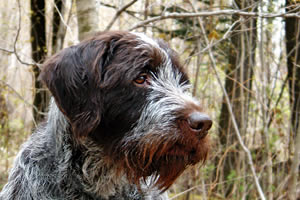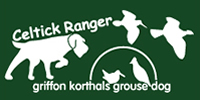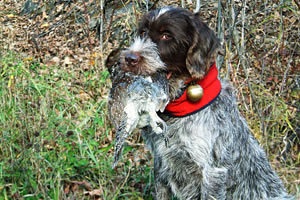|
Born on November 16, 1851 in Amsterdam, he
is the son of a rich ship-owner who had an unquestionable
interest for breeding, so much so that he supported the newborn
passion of hisson for hunting and dogs,
passion that was overriding his taste for business.
The young Eduard Karel Korthals preferred
to raise dogs and to hunt wildfowl, than to join the paternal
company
In 1873, at age 22, with the financial support of his father,
he settled close to some friends in Hesse (Germany)
a regon abounding with game. Four years later, one of his
friends, Prince of Solms-Braunfels, entrusts him with
the management of his Bibesheim kennel, the most famous of
Germany, made up especially of English pointers,
while enabling him to continue to simultaneously breed griffons.
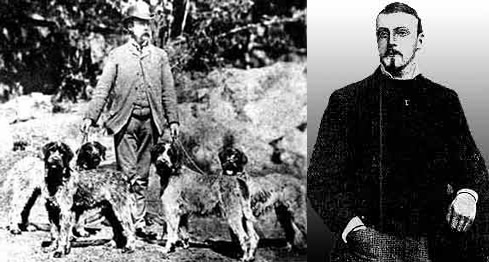
Eduard Karel Korthals
Korthals was going to become one of the largest
stockbreeders, proud of his selection work.
He began with 7 griffons of any type, wire-haired, woolly
hair, barbet and a German half-bred with short hair.
The 7 PATRIARCHS of griffons were : Banco, Hector, Janus,
Satan, Donna, Junon and Mouche. To arrive,
in less than 20 years, to a specific breed of wire-haired
pointing griffon, Korthals carried out coupling in very
narrow consanguinity and was devoted to a pitiless selection.
Out of 600 dogs, he kept only 62 and made them
work in woods, in the marsh, in plains, by all time, trusting
them on all kinds of game.
In the creation of the wire-haired pointing
griffon, Korthals did not use any English blood (pointer),
because after
having tried it, he found out that such a crossing made the
pointing griffon lose some of its true characteristics.
With its method of consanguinity, selection
and drive, the Korthals griffons were of such quality that
they astounded
the specialists in Germany, in Belgium, in the Netherlands,
in France and a little everywhere in Europe, as much by
the width and the speed of their search than by the smoothness
of their sense of smell and that of their versatility.
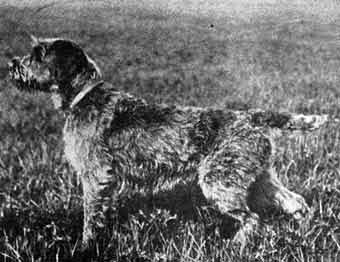
Capitaine Fracasse
On November 15, 1887, through the instructions
of a Commission of 16 stockbreeders chaired by Prince of Solm-Braunfels,
E.K.Korthals wrote the standard of Wire-haired pointing griffons;
it has never been modified ever since.The following year,
he created a Griffon Club bringing together griffon lovers
from various countries and until his death in 1896, he was
devoted
to the improvement and the diffusion of the wire-haired pointing
griffon. He died of cancer of the larynx
on July 4, 1896 in the Bibeishem kennel.
His ideas had sufficiently made followers
to survive him and his friends the Baron of GinGins (Switzerland),
Charles Prudommeaux (France) and Mr. Leliman (Holland) continued
his invaluable work, the improvement
of the wire-haired pointing griffon and his diffusion through
all of Europe and even in North America.
On the occasion of his fiftieth anniversary,
on June 8, 1951, the French club of the wire-haired pointing
griffon
decided to associate the name of Korthals with the designation
of the race to perpetuate the memory of its creator ;
cheers and thank you for the leaders of the French Club of
the time.
|
When I write this text in the
summer of 2000, it was for my first website
I sent it to Mr. Jacques Carpentier in France a Griffonnier
friend to me
to correct the text and his response was:
"Bravo Asbed for this
text, everything is well written I do nothing to correct"
Asbed Iskedjian
|
|
